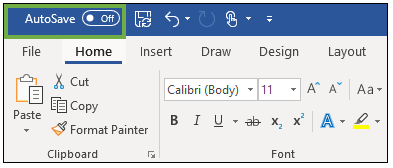

If a document can be autosaved, there shouldn’t be a dot on the close button in the document’s title bar and next to the document’s name in the Window menu. In general, use a dot to mark a modified document as unsaved only when it can't be autosaved. These behaviors ensure that work is always saved unless the user explicitly chooses not to keep it.

If a document wasn’t previously saved and the user quits the app, logs out, or restarts, the document should automatically be saved in temporary form and restored the next time the app opens. An existing document should save changes automatically whenever the user closes the document, quits the app, logs out, or restarts.
Present a Save dialog only when the user explicitly tries to save or close a previously unsaved document containing content. For developer guidance, see the autosavesInPlace() function of NSDocument. Note that Auto Save requires minimal effort to adopt. Opt-in to Auto Save so they can rely on these behaviors in your app. In general, people expect their content to be saved continuously and without intervention. At any time, the user can browse through these saved versions and revert back to one.Įnable Auto Save if your app is document-based. When Auto Save is enabled, a version of the document is automatically saved at least once per hour, and each time the document is opened, duplicated, locked, renamed, reverted, or manually saved.
MAC TURN OFF AUTOSAVE FOR AN APP MANUAL
Auto Save reduces manual work while editing documents, increasing focus on content creation and insuring the preservation of data. If the result is 0, you have successfully turned the autosave off.Document-based apps can implement Auto Save to automatically save versions of documents as the user works on them. To test the modification: open or create a Python notebook and execute, in a new cell, %%javascriptĮlement.text(_interval) enter 0 for Autosave interval (in minutes) which would be set on notebook load.check the box Set an autosave interval on notebook load.Select the autosavetime extension, and turn off autosave as follows: Once it is installed, restart jupyter notebook and go to nbextensions_config in the Edit menu.

Jupyter nbextension enable autosavetime/main
MAC TURN OFF AUTOSAVE FOR AN APP INSTALL
The autosavetime extension is part of the Jupyter notebook extensions and can be installed with pip install jupyter_contrib_nbextensions In Jupyter Notebook, I think the autosavetime extension is easier to use than the custom.js file. So I'm back to the custom.js solution: mkdir -p ~/.jupyter/customĮcho "_autosave_interval(0) " > ~/.jupyter/custom/custom.jsĪs pointed out by Thomas Maloney above, JupyterLab now has a command for that (Uncheck Autosave Documents in the Settings menu). Edit: The autosave interval on notebook load does not appear to work any more in recent version of Jupyter Notebook ( jupyter notebook -version at 6.0.1).


 0 kommentar(er)
0 kommentar(er)
